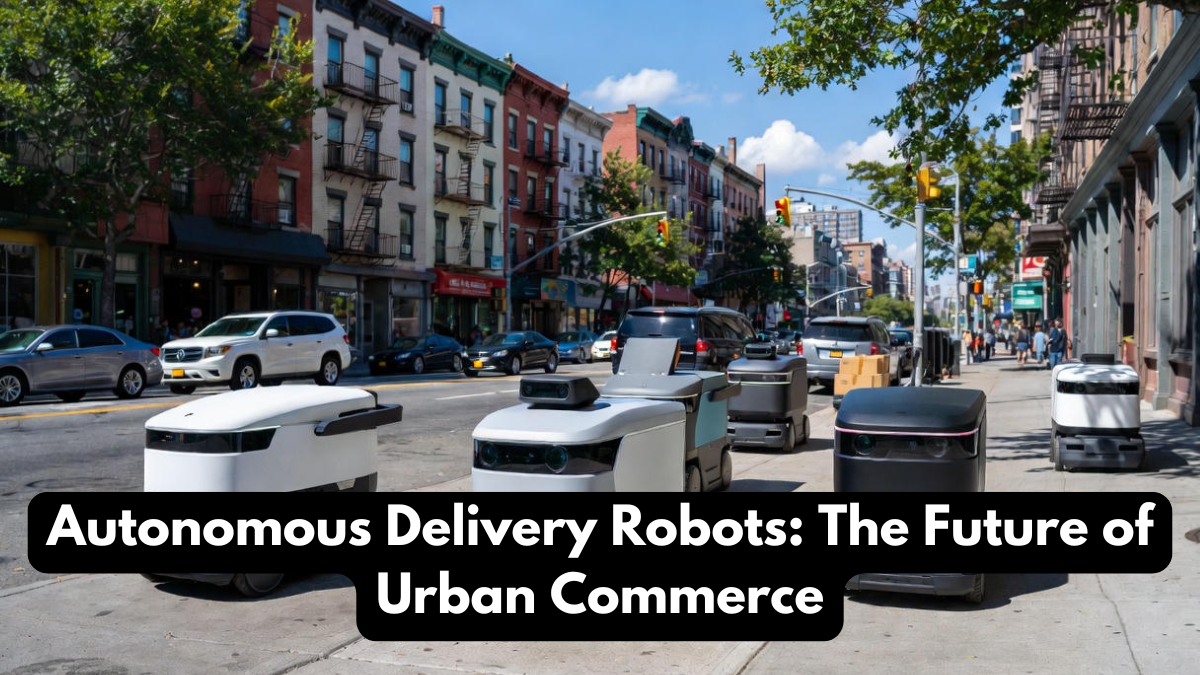The rapid growth of delivery robots is reshaping how cities handle last-mile transportation. As businesses aim to reduce delays and improve efficiency, automated machines powered by advanced AI logistics are stepping in to handle deliveries with far greater precision. These small but highly capable robots navigate sidewalks, communicate with cloud systems, and deliver products faster than most human couriers. Their rise marks a major technological shift in urban commerce, ushering in a new age of intelligent, reliable, and eco-friendly delivery solutions.

How Delivery Robots Transform Modern Cities
Urban environments are becoming increasingly congested, making traditional delivery methods slow and costly. This is where delivery robots offer a breakthrough. Using advanced AI logistics, these machines calculate routes, avoid obstacles, and deliver packages without requiring human intervention. For businesses, this means faster turnaround times and significantly lower operational costs.
As city populations continue to rise, the pressure on delivery systems also increases. Delivery robots support efficient movement through crowded walkways and narrow streets, ensuring goods reach customers quickly. Thanks to their continuous connection to cloud-based AI logistics, they adjust to real-time conditions such as weather, roadblocks, and pedestrian flow, ensuring a consistent delivery experience.
The Technology Behind Autonomous Delivery Robots
Behind every efficient delivery robot lies a combination of sensors, processors, and intelligent software driven by AI logistics. These technologies ensure the robot can independently handle tasks that once relied entirely on human couriers. The following table provides a structured overview of the core components that make these robots functional and dependable.
| Component | Description | Importance |
|---|---|---|
| Lidar & Cameras | Detect obstacles and map surroundings | Ensures safe navigation |
| GPS Navigation | Tracks location and calculates routes | Helps robots follow accurate paths |
| Cloud Connectivity | Syncs with servers using AI logistics | Allows live updates and decisions |
| Secure Storage | Keeps parcels safe during transit | Maintains delivery integrity |
| Battery System | High-capacity rechargeable units | Supports long-distance tasks |
Together, these features enable delivery robots to operate seamlessly in dynamic environments. With continuous improvements in AI logistics, these machines are constantly learning, adapting, and improving their performance.
Advantages for Businesses and Consumers
The widespread adoption of delivery robots brings multiple benefits. Businesses gain the flexibility to deliver during busy hours without worrying about traffic delays or labor shortages. With the help of AI logistics, these robots optimize routes and cut unnecessary travel time.
Key advantages include:
- Reduced delivery costs
- Faster fulfillment rates
- Minimal environmental impact
- Real-time route optimization
- Higher customer satisfaction
For consumers, the experience becomes more predictable and transparent. They enjoy accurate delivery times, real-time tracking, and reliable service—even during peak hours. AI logistics ensures every journey is optimized, resulting in quicker deliveries and fewer errors.
Challenges and the Future of Delivery Robots
Although the technology is advancing quickly, delivery robots still face challenges. Regulatory barriers, harsh weather, and unpredictable pedestrian traffic can interrupt their operation. However, ongoing improvements in AI logistics are helping address these issues by giving robots better awareness and decision-making abilities.
In the near future, experts predict that delivery robots will integrate with smart city infrastructure. This means communication with traffic systems, automated warehouses, and drones for multi-layered delivery solutions. With stronger algorithms, these robots will handle more complex tasks, from medical deliveries to emergency supplies, redefining efficiency across every delivery sector.
Conclusion
The rise of delivery robots marks a revolutionary transformation in the world of urban delivery. Powered by intelligent AI logistics, these machines offer faster service, reduced emissions, and improved reliability for businesses and customers alike. As cities evolve and technology progresses, delivery robots will become an essential part of everyday life, paving the way for smarter, more sustainable urban commerce.
FAQs
What are delivery robots?
Delivery robots are autonomous machines that deliver goods using sensors, navigation systems, and AI logistics to operate independently.
How do delivery robots navigate urban environments?
They use cameras, lidar, GPS, and real-time AI logistics to detect obstacles, choose the best routes, and move safely.
Are delivery robots environmentally friendly?
Yes, delivery robots help reduce carbon emissions by replacing fuel-based delivery vehicles.
Can delivery robots work in all weather conditions?
They function well in light rain or snow, but extreme weather may affect performance despite the support of AI logistics.
Why are businesses adopting delivery robots?
Businesses benefit from lower delivery costs, faster service, and efficient route planning powered by AI logistics.
Click here to learn more